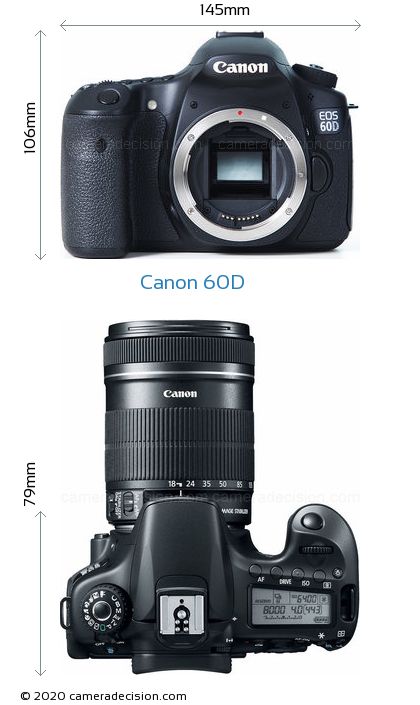


In-camera High Dynamic Range and Multiple Exposure modes (JPEG-only).
60d canon frame serial#
AF microadjustment (can be set individually for up to 40 lenses, remembered by lens serial number).Built-in flash works as off-camera remote flash controller.Fully-articulated touchscreen, 1040k dot 3" ClearView II LCD, 3:2 aspect ratio.98% viewfinder coverage, 0.95x magnification, switchable gridlines and electronic level display.19-point AF system, all points cross-type, sensitive to -0.5 EV.1080p30 video recording, stereo sound via external mic.7fps continuous shooting, burst depth 65 JPEG / 16 Raw.20.2MP APS-C 'Dual Pixel CMOS AF' sensor.The 70D also regains an array of features that disappeared between the EOS 50D and 60D, such as AF microadjustment. It also adopts the superb touchscreen interface that debuted on the EOS 650D (Rebel T4i), which we've found to be more useful than you might at first think.
60d canon frame full#
So it offers a full set of external controls to operate most key functions, and Canon's well-designed Quick Control screen to cover pretty much everything else. In terms of control layout the EOS 70D is a logical evolution of the EOS 60D, adopting many of Canon's intervening updates and improvements. Image processing is via the DIGIC 5+ processor first seen in the EOS 5D Mark III. It can rattle shots off at 7fps for up to 65 frames in JPEG or 16 in Raw, and its standard ISO range covers 100-12800, with ISO 25600 as an expanded option. To this end it uses the same 19-point AF sensor as the EOS 7D for viewfinder shooting, but with slightly simplified control options in firmware. We'll look at the technology behind the EOS 70D's live view AF in more detail later, but let's not forget that it has to work as a conventional SLR too. This means it could well be the most capable live view autofocus system we've yet seen on any type of camera. Canon says that its Dual Pixel AF system, in contrast, works across an area 80% of the frame width and height, in light levels as low as 0 EV, and at apertures down to F11. But because until now it's used relatively few active pixels scattered sparsely across the sensor, it's had practical limitations, often only covering a restricted area of the frame and struggling once the light drops below outdoor daylight levels.

Since then it's been adopted in one form or another by most manufacturers, with arguably its most successful implementation coming in Nikon's 1 System mirrorless models.

On-chip phase detection is nothing new - we first saw it in the Fujifilm F300EXR back in 2010.
60d canon frame movie#
This means that in principle they are all capable of phase detection autofocus in live view and movie mode. It offers 20.2MP resolution, but uses a 'Dual Pixel CMOS AF' design in which every single pixel is split into two separately-readable photodiodes, facing left and right. But on the inside it sports an entirely new sensor that is, potentially, revolutionary. It borrows many of the best bits from Canon's existing SLRs, including the autofocus sensor from the EOS 7D, the fully articulated touchscreen from the EOS 700D (Rebel T5i), and built-in Wi-Fi from the EOS 6D.
60d canon frame upgrade#
The EOS 70D is a mid-range SLR for enthusiast photographers that from the outside looks like a sensible, indeed desirable upgrade to the EOS 60D. But since then Canon's APS-C cameras have all sported variants on the same basic sensor design, to the extent that you could be forgiven for wondering what on earth their engineers were doing all day. Almost every new EOS model came with an increase in resolution and high ISO range, and when the EOS 7D appeared in late 2009, the company had progressed from 3MP to 18MP, and ISO 1600 to ISO 12800, in just over nine years. During the early days of digital SLRs, Canon was pretty much the undisputed leader in CMOS image sensor technology.


 0 kommentar(er)
0 kommentar(er)
